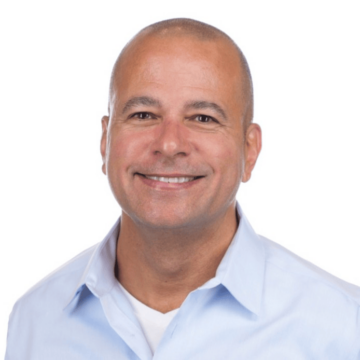This year has been very exciting for the Citrix Service Provider world! Since 2008, the CSP program has allowed service providers all over the world to deliver value to their customers through well developed service offerings that revolve around Citrix technology. With over 2 million active users being serviced by our CSP partners by 2024, our CSP program was due for an update that helped partners adapt to the current market needs. Enter Citrix Universal for CSP!
Focused on the right audience, with partners’ needs in mind
The CSP program has always been aimed towards SMB and mid-market customers, and it is our preferred route to market to service customers in these segments. Our CSP partners have the knowledge, skill sets, and scale to empower customers with packaged services that cater to their business priorities and use cases. With this in mind, Citrix has consolidated many product offerings into a single Universal for CSP offering with the purpose of transforming our business and delivering our partners with stability through an annual commit model, simplicity by going from ~1000 down to 2 SKUs and removing reporting requirements, and a massive amount of value through a dramatic increase in capacity and capabilities.
On the other hand, as part of this transformation, we also learned that this model might not be the best fit for our smaller CSP partners. For this reason, just last week we announced a new strategic partnership with Arrow that will allow these partners to keep adding value to their customers through a program that better adapts to their specific needs. For more information on that topic, please check this blog by our VP of Channel Programs, Ethan Fitzsimons.
Wasn’t this supposed to be a technical blog?
I know, you expected a technical update, so enough with the sales pitch, let’s get into it. With September 1st being the suggested date to transition off of legacy CSP licensing, we are now helping partners switch current (and new) customers to Citrix Universal for CSP. So as a partner that already made this move, you might be asking, now what?
Citrix Universal for CSP entitlements
Let’s start by looking at the entitlements that are delivered to your Citrix account. To make this easier, I’ve created the following slide.
As you can see, your Citrix Universal for CSP can be divided into three main umbrellas. Keep in mind that license versions are no longer a concern either, from now on, all of your Citrix, NetScaler, and XenServer licensing is at Premium level.
- Citrix Licensing: This includes Citrix DaaS, Citrix Virtual Apps and Desktops (CVAD), and Citrix Endpoint Management (CEM). A license entitles a user to those three products, meaning, they are not separate licensing buckets, they could be considered “features” included as part of Citrix Universal for CSP, similar to other features like Citrix Policies, WEM, or App Protection. The number of licenses you receive in this bucket is determined by your contract, and remember, we threw an additional 15% free buffer for you to use as required.
- NetScaler Flexed Licensing: Here, things get very interesting. Your NetScaler Flexed licensing is considered “a separate entitlement”. This means that regardless of the number of Citrix Universal licenses you purchased, you are getting a huge number of instance licenses, namely 999 per form factor (VPX, VPX FIPS, SDX, and MPX), and a massive amount of bandwidth, 1TB. Additionally, NetScaler Console (formerly ADM) is now free for you to use to manage and monitor your NetScaler environments.
- XenServer Licensing: This is considered yet another bucket. As of June of this year, XenServer is now included with Citrix Universal for CSP. This will allow you to host all your Citrix workloads and prevent you from having to pay for yet another platform that becomes part of your COGS. XenServer is optimized for Citrix workloads and Citrix Universal for CSP provides you with unlimited XenServer per socket licenses to take advantage of.
The 15% free buffer is really free
I’d also like to quickly cover the 15% free buffer, which applies specifically to the Citrix licensing portion, as its behavior varies between CVAD and DaaS. First and foremost, keep in mind that your 15% free buffer is not included in the total number of licenses delivered to your partner account, they are managed as an overage in the case of Citrix DaaS, and an overdraft for CVAD, let’s expand on this.
- CVAD: The license CVAD license file includes the total number of licenses that were delivered to your partner account. However, once you allocate licenses to a specific hostname and download the license file, feel free to open the .lic file with a text editor, you will notice that there will be a flag called “Overdraft”, which represents your 15% free buffer. Additionally, for CVAD licensing this is considered a hard limit, so once the total number of users + 15% overdraft are assigned a license, new user connections will not be allowed, as there are no licenses to allocate. Finally, keep in mind that the 15% free buffer is split along with your license files, for example, if you have 2000 CVAD licenses in total (which provides you with a 300 user overdraft) and split that in half across License Server A and License Server B, each license file will include 1000 user licenses + 150 user overdraft.
- Citrix DaaS: Citrix DaaS licensing does not have a hard limit, as is the case with CVAD, so even if you were to provision 100 licenses to a tenant, that could possibly grow way beyond the 15% overage. However, keep in mind that the best practice is to right-size your environments as close to the real utilization as possible. On the other hand, for DaaS, we do not look at your 15% free buffer on a per tenant basis, but as a total. This means that if one, or 2, or even 10 customer tenants go beyond the 15%, that is perfectly fine. However, if your full utilization as a CSP aggregated across all your customers surpasses your total licenses + the 15% free buffer, although your DaaS customers will not experience any issues when trying to connect, that would be a good time to reach out to your CSP Account Executive and discuss an expansion scenario.
Which license files and where?
Now that we understand the entitlements that will be delivered to your CSP partner account by Citrix Universal for CSP, I am sure you want to know how to make the transition and start taking advantage of the new licenses. It’s really simple.
- Citrix Licensing:
- CVAD: As I mentioned before, this is all Premium Licensing across the board, and the process remains the same. Now that you have transitioned to Citrix Universal for CSP, you will find a new CVAD license file on your Citrix account. Same as before, all you need to do is allocate these new licenses to the hostname of your Citrix License Servers. Once allocated, swap the license file on the License Server and you’re set. If you were previously using Base / Standard level licensing via legacy CSP licenses, also remember to update the product edition in Citrix Studio. Last but definitely not least, there’s another license file specifically for App Protection features, so make sure you install it on your license server as well if you want to take advantage of this amazing security feature.
-
- Citrix DaaS: All your Citrix DaaS licensing is now Premium level too, this means no more Standard, Advanced, or Advanced Plus tenants. As you might have noticed, once your Citrix Universal for CSP order was processed, all your Citrix DaaS licenses were delivered to your partner Citrix Cloud account. The process to get DaaS licensing to your end customer tenants has also been greatly simplified, as you no longer have to process stocking orders through distribution. All you have to do is fill out your customer details in this form and we will transfer the licenses for you. Make sure to engage your CSP AE / ATS team as part of this process.
- Citrix Endpoint Management: This is directly tied to your Citrix DaaS licensing, so for the purpose of license allocation, it is managed the exact same way as Citrix DaaS licensing.
- XenServer: For XenServer, the process is also the same as it used to be for legacy XenServer per-socket licenses. Your XenServer Premium license file needs to be installed on your Citrix License Server and then applied to your XenServer deployment via XenCenter or the xe CLI. Feel free to check this step-by-step guide for further information.
- NetScaler Flexed: You guessed it, NetScaler licensing is also Premium across the board, so you no longer have to worry about license editions and features when provisioning licensing for your customer environments. With the legacy CSP licensing, all NetScaler licensing used to be managed directly on the VPX appliance, and the license file included both the edition level (Standard, Advanced, and Premium) and a fixed amount of bandwidth. Having said that, the introduction of NetScaler Flexed changes the way CSP environments are licensed. In order for you to license your NetScaler deployments, you will need to deploy NetScaler Console, either the Citrix Cloud version, or the VM version if you want to manage it yourself. This means NetScaler licensing can no longer be installed directly on the VPX appliances. Check out the NetScaler Console and Flexed Licensing documentation for further information. Here’s a quick summary of the NS specific license files that will be delivered to your CSP partner account.
- SW instance license files: You will receive 4 separate SW instance license files (999 each) for each form factor: VPX, VPX FIPS, MPX, and SDX. All of these licenses must be allocated and uploaded to NS Console.
- Bandwidth license file: This file represents your 1Tb of bandwidth. You will receive 10,000 units of 100Mb bandwidth each (totalling the 1Tb) that you can allocate to a single or multiple NS Console deployments. Please do not confuse this with actual appliance bandwidth allocation, which can be done in 10Mb increments via NS Console, this license represents the total bandwidth available for allocation to a single or multiple, separate NS consoles.
- Zero capacity license files: You will see 2 zero capacity license files, which are intended to be used with physical appliances only (SDX and MPX). These are meant to be installed on the appliances and not NS Console.
Note: Our licensing documentation does a great job at explaining NS Flex licensing and the various license files utilized. While we know this might represent a change to your current NS architecture, transitioning to NS Console will allow our CSP partners to unlock the true potential of NS Flex licensing. I encourage you to contact your CSP AE / ATS team if you need further assistance with this transition.
The future is now
Adoption is king
As mentioned before, one of the main goals with Citrix Universal for CSP is to bring lots of VALUE by providing increased capacity and capabilities; it facilitates migrations to the Cloud and modernization due to its hybrid nature. The feature set included in both CVAD and DaaS allows our CSP partners to build modular offerings that can easily adapt to customer requirements, while also providing the flexibility to drive increased adoption at scale. Universal licensing easily adapts to different offering designs, whether it is use-case based, verticalized, or “a la carte”. Let’s look at some sample use cases that will allow you to increase product adoption.
- Deliver HMC ready workloads – Citrix Universal for CSP allows you to provision both DaaS and CVAD based workloads across multiple cloud and on-prem environments. Leverage the power of HDX to deliver specialized use cases like GPU enabled workloads, or Remote PC Access, including the newly added macOS support.
- Personalized user experience – Combine the flexibility of Citrix App Personalization to allow for a more personalized endpoint experience, Global App Configuration service for Workspace App experience tailored to your requirements, and advanced Softphone Optimizations for the best audio and video quality.
- Fast onboarding at scale – Streamline image delivery via Citrix MCS and Citrix Provisioning and avoid image sprawl with Citrix App Layering. Onboard seasonal users, contractors, or new use case personas with just a few clicks.
- Increased user density, decreased cost – Citrix WEM plus Citrix Auto-Scale equals decreased cost of ownership. Combine them with hosted shared desktops to deliver unparalleled performance while dramatically increasing user density per VM.
- Bulletproof resource availability – Leverage more than 25 Citrix Gateway Service POPs around the world, add Citrix Service Continuity and / or Local Host Cache, and deliver a robust architecture that ensures users have access to resources when needed.
- Protect your data – Adaptive Authentication protects your environment during user authentication, Device Posture controls access to data based on the user’s context, App Protection prevents data exfiltration, and Session Recording monitors user sessions to ensure maximum compliance.
On the other hand, NetScaler Flexed was not created with only DaaS workloads in mind. By bringing NetScaler flexed licensing and NetScaler Console together, we ensure rapid deployment and automation, easier maintenance, central patch management, and more. Our intention is that you use NetScaler Flexed beyond the DaaS use cases and increase adoption by solving new, unexplored use cases.
- Secure access environment – Handle all of your customer’s authentication requirements through a standalone authentication solution, delivered via NetScaler. NetScaler allows you to build a multi-IDP solution with support for Single Sign-On.
- Deliver highly available workloads – Leverage the power of GSLB to deliver support for DR enabled workloads and increase application performance.
- Secure your web applications – Secure your web apps from bad actors with NetScaler Web App Firewall and Bot Management, among other security capabilities.
Developing new functionality
Our Product Management teams have been working hard to fill any gaps that prevent our partners from building flexible, scalable offerings that leverage Citrix technology to its full potential. New product features are being developed as you read this and we encourage partners to check updates.cloud.com for the latest product updates.
As we move forward, the future looks incredibly bright for Citrix Service Providers with the introduction of Citrix Universal for CSP. This transition empowers partners to deliver even greater value to their customers with enhanced stability, simplicity, and value. By streamlining licensing and expanding capabilities, CSPs are now better positioned to meet the evolving demands of businesses in the rapidly changing EUC landscape.



